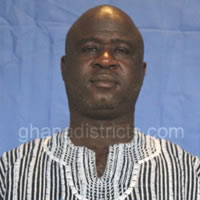Introduction
The status of households in any community gives an understanding of the general characteristics of that community. The total size of the population and its characteristics are largely a reflection of what happens at the household level. Demographic, social and economic factors have significant influence on the size, structure and composition of households in the District. This chapter examines the household’s size, composition, headship, marital status, nationality and religion in the District. Again, the chapter presents information on literacy and education of the population.
Household Size and Locality of Residence
The composition and size of households distinguish one household from the other. Demographic factors like age, household composition, employment status and others are all significant in assessing the welfare of the members of the household. A household is defined as a person or a group of persons, who lived together in the same house or compound and shared the same house-keeping arrangements. In general, a household consisted of a man, his wife, children and some other relatives or a house help who may be living with them. However, it is important to remember that members of a household are not necessarily related (by blood or marriage) because non-relatives (e.g. house helps) may form part of a household. The total household population in the District is 86,432. The average household size in the District is 7.6 compared to the regional average of 7.7. (Table 3.1)
Household composition and headship
The household head is defined as a male or female member of the household recognised as such by the other household members. The head of household is generally the person who has economic and social responsibility for the household. All relationships are defined with reference to the head. Table 3.2 presents information on the population by composition and sex. The proportions of the population who are heads constitute 13.2 percent, with 22.6 percent of males being heads compared to 3.8 percent of females. A little over half (50.8 %) of household members are children. The least number of the household members are adopted/foster child (0.5%).
Household structure
Table 3.3 shows that majority of the household population are of the extended family type (68.8%) compared with those in the nuclear family households (31.2%).The extended family comprising head, spouse(s) and children constitute 51.2 percent extended and non-relatives (2.6%), head, spouse(s) and other composition (1.8%), single parent extended (8.8%) and single parent extended with non-relatives (0.6%). Majority of the population in the nuclear family are made up of head, spouse(s) and children (26.1%).
INFORMATION COMMUNICATION TECHNOLOGY
Introduction
Information Communication Technology (ICT) plays an important role in the development of an economy. This chapter analyses data on access to and use of ICT by individuals and households in the Central Gonja District. For individuals, persons who are 12 years and older were asked if they had access to and used mobile phones internet facilities (at home, internet café or on their phones). Questions relating to desktop/laptop computers were asked of households.
Ownership Mobile phones
An examination of the distribution of mobile phone ownership by sex in Table 5.1 shows that in Central Gonja, out of a total population of 53,110 12years and older, only 15.9 percent own mobile phones. Of the male population 12years and older, 21.6 percent own mobile phones while 10.5 percent of the females within the same age category won the device.
Use of internet
The Internet has become a very useful communication facility for people, businesses and organizations. Some of the common uses of the Internet include electronic mailing, accessing information, conducting business transactions, social networking and shopping.
From Table 5.1, only 264 are users of internet facilities out of a total population of 53,110 12 years and above in the Central Gonja District. This indicates that only 0.5 percent of the population 12 years and older have access to the internet. As shown in Table 5.2, there are marked differentials in access to internet facilities by sex. A higher proportion of the males (0.7%) use the internet compared to 0.3 percent of females.
Date Created : 11/17/2017 5:16:11 AM





 facebook
facebook twitter
twitter Youtube
Youtube TOLL FREE 0800 430 430
TOLL FREE 0800 430 430 +233 593 831 280
+233 593 831 280 GPS: GE-231-4383
GPS: GE-231-4383 info@ghanadistricts.com
info@ghanadistricts.com Box GP1044, Accra, Ghana
Box GP1044, Accra, Ghana